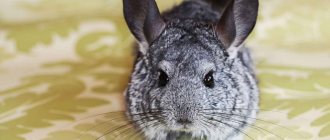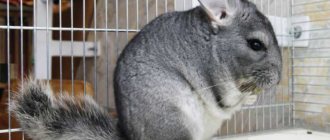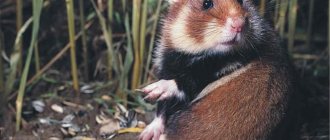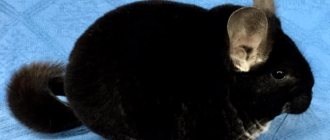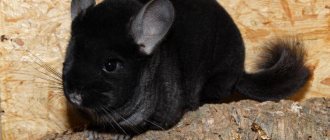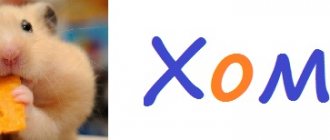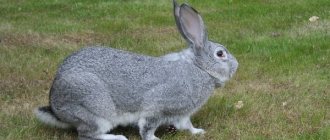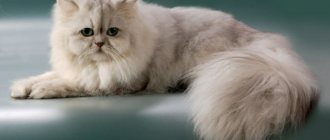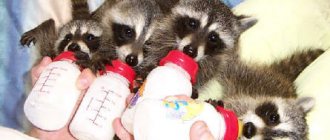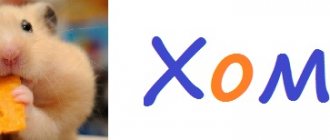- Rodents
| Data left by users (City, cost) | |
| Roslavl | 1000 |
| Pavlovo village Malyavino | 1000 |
| Novorossiysk | 1000-1500 |
| Tomsk (guys, don’t buy rabbits, buy them) | 6000 |
| Omsk | 1000 |
| Saransk | 500 |
Chinchillas are fluffy rodents with valuable fur, native to South America. We will talk about how much these animals cost in our article.
Cost of chinchillas
Prices for small fluffy rodents cannot be called affordable. The price tag for chinchillas starts from 1.5 thousand rubles, and ends in amounts of hundreds of thousands of Russian currency. This range in prices is associated with the appearance of the animal, its breed, the purpose of purchase (as a pet or for fur), as well as the fame of the seller.
For example, at a poultry market you can find a chinchilla for 500 rubles, but in this case there is no guarantee that the seller is selling healthy animals.
In pet stores, the starting price for chinchillas is 1.5-2 thousand rubles. More expensive breeds can cost 10-20 thousand rubles.
Breeders sell fluffy rodents for 1.5-3 thousand rubles. The maximum price for these animals is 30-50 thousand rubles.
Note: the cost of chinchillas is affected by the color of their fur. For example, an animal with a complex color will cost more than its monochrome comrades by about 10,000 rubles.
The most expensive colors of chinchillas
If an animal has a rare color, this does not mean that it automatically becomes 2-3 times more expensive. For a chinchilla with a rare color to become really valuable, its fur must have:
- Saturated color
- Uniform distribution of color
- Light shine
- Uniform coloring of individual parts. For example, a dark back and a white belly. The border between the two colors should be quite clear.
Dark colored chinchillas are more valued than light colored ones.
Such chinchillas must have a pronounced dark color on top and a light belly, and the boundaries between colors must be respected. If, for example, 3 legs are light and 1 is black, then such a chinchilla is sold at a reduced price, since breeders of rare colors are not interested in it. If a chinchilla is one color and has spots of a different color, then for breeders of rare colors this is a defect. Such chinchillas are no longer used for breeding rare colors; they are usually given to a pet store.
There are exceptions when chinchillas develop stripes, which give them a chic appearance. Then the cost of the animal immediately increases.
If a chinchilla does not have the Ebony gene, i.e. If it doesn't have a white belly, it should have a clear separation between the colors.
Chinchillas that do not have the ebony gene (with a white belly) must have a smooth check and a low color border. It’s good if an animal sitting on 4 legs doesn’t have a visible abdomen. It's not scary if it is visible in the form of a small corner from the back.
An ebony chinchilla with a colored belly is more valuable if the belly has the same color saturation as the back. But if the belly is a little lighter, this is not a defect.
The standard colors are solid chinchillas: dark, white, beige, gray and black. There are many of them and it is very easy to breed, since the offspring usually turn out exactly the same.
The most valued are hybrids, which are very difficult to breed because you need to calculate the result in advance. It is possible that the color will turn out accidentally and the offspring will not have it, then the breeder will bear the risks and will have to sell the chinchillas at a lower price than he expected.
Description and character of chinchillas
Chinchillas are fairly large rodents with fluffy fur, the length of which can reach 38-40 cm. The animal’s head is round in shape, with medium-sized ears on it. The black eyes of chinchillas have vertical pupils, which helps the rodent navigate the area in the dark. The entire body is covered with soft, warm fur; the animal’s tail is covered with guard hairs. The front legs are five-toed, the hind legs are four-toed, they are stronger and longer than the forelimbs. An adult chinchilla weighs 600-800 g; the standard fur color is considered to be an ash (gray-blue) hue. The animal's belly is usually covered with white fur.
The behavior of a chinchilla depends on the treatment of the owner and his family members. With caring owners, the animal becomes friendly and affectionate. Other qualities of the South American rodent include curiosity, developed intelligence, timidity, talkativeness and activity.
Note! Chinchillas are nocturnal animals; they sleep during the day and are awake at night. Be prepared for constant rustling and “running” around the cage.
physical characteristics
In addition to fur and color, the proportions of a chinchilla's body are very important. The most valuable animals are those with the following characteristics:
- Correct body proportions; the animal should have approximately the same distance between the shoulders and the sacrum.
- The head should be quite wide, and not narrow like that of rats. This face looks much more beautiful.
- Beautiful, wide and shiny eyes.
- Short, not elongated neck.
- The weight of an adult should be about 600-800 grams.
- The ears should be round in shape, this is easy to determine visually.
Preparing for the appearance of a chinchilla in the house
In order for the chinchilla to be comfortable in the apartment, the future owner needs to carefully prepare everything.
- Buy a cage. Its dimensions must be at least 60 cm in height, 60 cm in length and 50 cm in width. All locks must reliably secure the rodent’s exit from the “house”.
- Buy a water bowl and feeder, a small box house for the animal to sleep, shelves for sharpening teeth, a hay box, mineral and salt stones, and floor filler.
- For entertainment, the chinchilla will need: ladders, hollows and rings made of wood, a running wheel, a hammock, and wooden toys.
- Chinchillas only take sand baths; getting water on the rodent’s fur is unacceptable. It is better not to place a sand bath in the cage to prevent rapid contamination of your pet’s home and to avoid drying out its skin. It is best to bathe a chinchilla while cleaning the cage, transferring the animal to a bathtub or basin where the bathtub is installed.
Note! Chinchilla fur is thick and warm, so they need a place where the air temperature does not exceed 22 degrees. Do not place the cage near radiators, refrigerators or other heating devices.
- Cat claw attachments
- Dog
- Long-eared cats
- Cat meowing
- Alexandrian parrot
- Why does a cat need a mustache?
Floor
Everything is simple here. Females are valued and almost everyone is eager to adopt them if they are a professional breeder. Oddly enough, there are usually more boys born, so there is no shortage of them.
Males are not yet so valued because chinchillas are polygamous animals. You can keep just 1 male for several females and you will not have any problems with reproduction.
If you plan to buy only 1 animal for your home, then it is better to take a male, since its maintenance is no different from a female, and it costs at least 1.5 times less.
Secrets of choosing the right chinchilla as a pet
When going for a chinchilla, you need to know how to choose a new pet. We have listed some tips below.
- First of all, you need to evaluate the appearance of the rodent. Chinchillas' fur should be soft, clean, close to the body and free from bald spots. The nose and eyes must be clean. It is better not to buy skinny or overly plump individuals. Be sure to run your hand through the chinchilla's fur in the opposite direction. Any deviations in the form of dried pus, scabs, inflammation, as well as the presence of parasites (ticks, fleas, etc.) indicate poor care and the presence of diseases in the animal.
- Look at the behavior of the animal. The animal must be mobile.
- Listen to the chinchilla's breathing. If you hear wheezing and whistling sounds, refuse to purchase this individual.
Note: in nature, chinchillas live in small families, so it is best to purchase 2 rodents of different sexes at once. If you are not ready to keep 2 animals, then be prepared to pay increased attention to your pet.
Fur
Chinchillas are loved for their beautiful fur, so the value of the animal depends on its condition. It should be slightly shiny in appearance, clean, and free of any lumps or dirt. If a chinchilla looks dirty, it means it is poorly cared for or is sick with something.
The animal's fur should be:
- Thick. Blow on the chinchilla or push the fur away with your hands; if no skin is visible, the fur is very thick.
- Short. Long fur is more common, but it is not valued.
- Brilliant. A healthy chinchilla's fur is always slightly shiny.
- Elastic. Blow on the chinchilla, the fur should return to its normal position.
Expenses
1. Buying chinchillas. The price of one individual is about 6-9 thousand rubles. For 3-4 females, one male is needed.
2. Equipment. Acquisition of cells. The maintenance area is required to be small in size. Up to 20 animals can freely fit in an area of 2 square meters.
The cells are placed on top of each other, so little space is required.
A cage of 30x40 cm is enough for one animal. They are made independently, to order, or purchased in stores. The cost of a cage can be from 1500 to 10 thousand rubles.
3. Nutrition. In one month, one individual consumes up to 0.7-1 kg of dry food, at a cost of up to 20 rubles per kilogram. It is possible to prepare food yourself, which will significantly reduce costs (hay, dried dandelion leaves).
Search for buyers
Who is the target audience for this business?
- The main buyers can be both existing farmers in the fur market and new entrepreneurs who want to form this direction in their own city. The search is carried out by offering products through the website and advertising. Direct commercial offers for the sale of individuals are also appropriate.
- Functioning pet stores selling such animals.
- City residents purchase animals for exotic purposes as a tribute to fashion. Attraction through advertising in the city. The income is the highest.
- Factories for sewing fur products and selling fur directly.
- Cafes, restaurant complexes, sellers of meat products - when selling meat.
Content Features
The chinchilla mini-farm is illuminated using ordinary light bulbs. Heating in winter is electric. Air conditioners are used for cooling in the summer. You can purchase animals using an affiliate program provided by the owners of special farms. There you can order cages and get information on the contents. Actually, what the animal needs: 14-18 degrees, 60% air humidity, sand for swimming, several hundred grams of food per day and a tree with a stone to sharpen its teeth.
How long does it take for a chinchilla to adapt after purchase?
The first few days after purchase the little animal refuses contact. This is fine. When the pet looks around at its new place of residence and gets used to it, its behavior will change - then it will be possible to get to know each other better. Typically the adaptation process takes 2 weeks. There is no need to disturb the rodent at this time and impose your company on it. It is necessary to protect the animal from any stress (noise, etc.)
Profit
The estimated cost of 1 animal is from 6,000-10,000 rubles. and higher, when selling for exotic purposes - from 10 to 30 thousand rubles.
From the volume of animals that 200 females produce, you can get 10-18 million rubles a year. When selling for exotic purposes, the profit will increase to 60 million. The cost of 1 chinchilla skin in the finished product reaches $1 thousand.
Products for sale:
- Live chinchillas for breeding.
- Skins and fur products.
- Chinchilla meat.
- Live chinchillas as exotic animals and a fashion element.
Bottom line
A chinchilla breeding business plan is undoubtedly quite easy to implement and incredibly profitable. This idea is excellent for starting your own business.
This activity is very easy, simple and does not require huge investments. Mega-high income (400-600%)! Just pay attention to how much chinchilla skins cost. The business involves implementing activities both at home and in the most large-scale way - by setting up a mini-farm. Costs for organizational issues are one-time, and the life expectancy of chinchillas (fertility) is up to 15-18 years. Business involves expansion.
Today it is difficult to find any area with such a huge income and such minimal investment. Undoubtedly, this is a very profitable business! One can only guess why it is very poorly developed in Russia, and the niche is still free.
